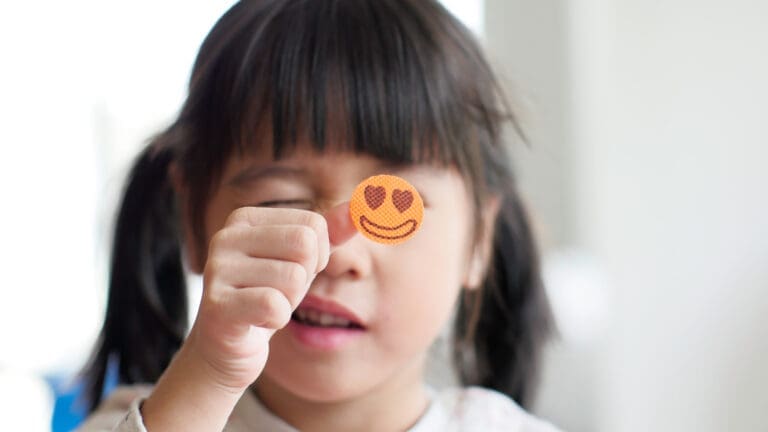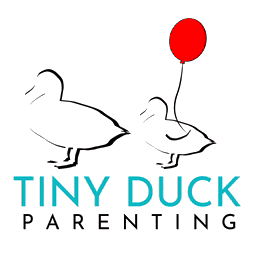The journey through a toddler’s sleep journey can be a frustrating and exhausting experience for parents, especially when confronted with the dreaded “2-year-old sleep regression.” Contrary to popular belief, sleep regressions in toddlers may not be as straightforward as they seem. We aim to challenge the notion of this being a regression. At Tiny Duck Parenting, we specialize in toddler sleep training and have extensive experience as toddler sleep consultants. We propose a different perspective. Instead, we urge you to think of this as a sleep change instead of a sleep regression– let’s delve into why your child’s sleep undergoes changes around the age of 2 and how you can guide them through this crucial sleep transition.
Understanding the Toddler Sleep Evolution
Around the age of 2, parents often observe shifts in their toddler’s sleep patterns. However, labeling this as a “regression” might not be entirely accurate. True regressions are transient and resolve on their own within a week or two, whereas the changes in your toddler’s sleep are more likely indicative of your toddler’s developmental milestones meeting the need for independence. This period signifies a new stage in your toddler’s life – a time when they’re acquiring new skills and gaining independence. You have likely noticed your toddler has acquired massive amounts of new skills and is constantly requesting they do everything on their own and without help as painstaking as that is for you to watch them slowly struggle to accomplish things on their own. However, fear not, this is the perfect time to give them the independence they crave at bedtime which will trickle into everything they do during the day.
Building Independence Through Your Toddler’s Bedtime Routine
Recognizing the challenges associated with this transition, it becomes crucial to reassess and tweak your toddler’s sleep routine. Consider this an invitation to guide your child towards greater sleep independence. Establishing a clear and consistent bedtime routine for your toddler becomes imperative at this stage. You have likely noticed your toddler is questioning everything and pushing the boundaries with every single task, so, creating a predictable bedtime routine that doesn’t change regardless of your toddler’s whims will create stability with falling asleep and your toddler sleeping through the night. Teach your toddler the importance of falling asleep on their own at bedtime– a valuable skill that will become an integral part of their nightly routine. As they learn to navigate the journey from wakefulness to sleep, they’re simultaneously developing essential life skills and gaining confidence that they can have the independence they so desperately crave. At Tiny Duck Parenting we are obsessed with toddler sleep and helping parents get more of it! Check out our Toddler Bedtime Routine Chart to create a dreamy bedtime routine that leads to the sweetest of dreams.
Why is Independent Sleep Important for Toddlers?
Bedtime is an ideal occasion for your toddler to cultivate a sense of independence. It encourages them to spend time alone with their thoughts, fostering an environment where they feel comfortable and secure. This newfound independence during bedtime can be a game-changer not just for your toddler but for you as a parent. As your child becomes adept at falling asleep independently, you gain valuable time for self-care and partner connection. The benefits extend beyond the realm of sleep, contributing to a more balanced and fulfilling family life.
Not to mention, toddlers are like little CIA operatives, they see opportunity in everything- that is their job! So, if they are used to a parent staying with them to fall asleep, it is likely the length it takes them to fall asleep is increasing and you find yourself scratching your head each night in awe of how long they are taking to fall asleep. Not to mention, the endless requests for one more book, one last hug, another sip of water, the list goes on and on and on- by giving your toddler independence at bedtime, you will shorten the duration of falling asleep and the endless requests. When your toddler realizes that bedtime is not fluid and is more like a choreographed dance that never changes, they will find security in that, just like a cozy blanket or hug.
Your toddler should be getting 11-12 hours of uninterrupted nighttime sleep, and if they aren’t getting that, their brains and bodies are not functioning at their fullest potential- it’s comparable to putting diesel in a luxury car- it can’t properly run. Your toddler’s sleep is a luxury vehicle waiting to unlock ease, patience, and more emotional regulation. How a toddler falls asleep at bedtime is also indicative of their ability to sleep through the night. If your toddler relies on check-ins from you, coming out of their room repeatedly, or needs someone to stay with them, then as they go through sleep cycles in the middle of the night and their body wakes up, they need the help they get at bedtime to fall back to sleep in the middle of the night- this is exhausting and not sustainable for you or your child.
Addressing Common Challenges
During this transitional phase, it’s not uncommon for parents to encounter specific challenges. Issues such as bedtime battles, toddlers refusing to stay in bed, or waking up in the middle of the night might become apparent. Instead of viewing these as hurdles in a regression, approach them as opportunities for growth. Take a step-by-step approach to tackle these challenges.
We recommend a complete overhaul of everything related to sleep, think of it like a sleep makeover. Now is the perfect time to create a bedtime routine that works for your family, adjust the timing of bedtime, reorganize your child’s room to be more sleep-forward, and teach your child the skill of choosing to stay in their bed and fall asleep without the endless drama and frustration. This is where it can get challenging for parents because it feels like what works one night never works again- the fling spaghetti approach is never preferred. A few important factors to address the 2-year-old sleep regression or sleep change is making the bedroom extremely dark and taking away all night lights- your toddler will likely object at first, but this will ensure the bed feels like the safest and coziest place to be. It also helps your toddler ever running mind to quiet down and relax now that the room is devoid of stimulation.
Your toddler might also need a bit of a shorter nap or a longer wake window between nap and bedtime. We recommend anywhere from 1-2 hours of nap sleep and a 5-hour gap between nap and bedtime. Our favorite timing is a 1230-230 nap and a 730pm lights out. Then, as your toddler is testing boundaries at bedtime and the middle of the night, a clear and consistent approach that doesn’t change night to night will unlock your toddler’s sleep superpower!
Conclusion:
In conclusion, the so-called “2-year-old sleep regression” might be better viewed as a transformative period in your toddler’s sleep journey. By reframing it as an opportunity for growth, independence, and skill development, you can guide your child through this
crucial phase with confidence. Embrace the changes, adjust your toddler’s bedtime routine, and celebrate the milestones as your toddler masters the art of falling asleep independently. Remember, it’s not a regression – it’s a step towards a more restful and independent sleep future for your child.















